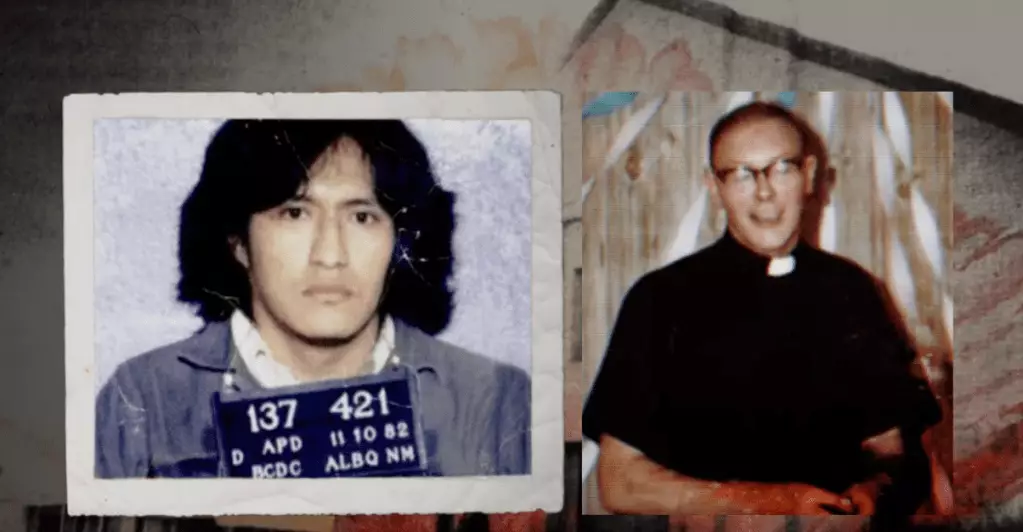In 1981, a tragedy unfolded under the Texas heat, where the lifeless body of Father Patrick Ryan was discovered behind the walls of the Sage and Sand Motel in Odessa. This wasn’t merely a crime scene; it was a grim reflection of society’s complexities and prejudices. Father Ryan, a closeted gay priest navigating the treacherous waters of his identity within the conservative confines of the Catholic Church, became a victim not just to violence but to the societal norms that vilified his existence. His murder sparked a profound injustice that lingered far beyond that fateful night, entangling an innocent man in its web.
The subsequent arrest of James Harry Reyos, a closeted Apache man, was a textbook case of scapegoating. Despite Reyos offering a solid alibi for the evening of the murder—he was not even in Odessa—he was wrongfully accused and ultimately convicted. This isn’t merely a narrative of an individual’s conviction, but a broader commentary on how prejudice and systemic failures can coalesce, painting innocent lives with strokes of guilt while ignoring the scars etched by racism and homophobia. Reyos’ tragic story is a stark reminder that in the shadows of the vigilante-style justice system, minorities often bear the brunt of its failures, irrespective of the truth.
The Role of Systemic Bias
The film “Night in West Texas,” directed by the acclaimed Deborah Esquenazi, shines a light not only on Reyos’ personal battle for justice but also on the insidious biases embedded within law enforcement. The film boldly suggests that law enforcement officials were acutely aware of their improprieties but chose to pursue a narrative that catered to the prejudices of the community. This characterization of Reyos as a ‘throwdown’ character—one whose ethnicity and sexual orientation made him an easy target—reveals the chilling reality of how vulnerable identities can be weaponized against them.
It begs the question: how many other innocent lives are caught in this perpetual cycle of injustice? The film forces audiences to confront the uncomfortable truths about the legal system: that faith in justice is not universally applicable and that the scales are often tipped against those who are already marginalized.
A Ray of Hope: A New Investigation
Change comes slowly, but with police chief Mike Gerke stepping into his role in 2017, a glimmer of hope emerged. The serendipitous involvement of Gerke’s daughter-in-law—a true-crime podcast enthusiast—became a catalyst for reinvestigation, revealing that vital evidence, such as bloody fingerprints, had languished in obscurity since the original trial. Here lies another tragic flaw in the system: the utter neglect of evidence that could have exonerated Reyos decades ago.
With this renewed scrutiny, the reopening of the case reflects both the potential for justice and the persistence required to attain it. Reyos, now represented by a dedicated team from the Innocence Project of Texas, sparks renewed activism around criminal justice reform. Their efforts to navigate this bureaucratic maze rekindle hope not only for Reyos but for countless others wrongfully incarcerated, reenergizing the fight against a system that often favors the narrative over the truth.
The Unyielding Spirit of Community
What stands out poignantly in this narrative is the community’s resilience and advocacy for justice. As “Night in West Texas” depicts, through the vilification of Reyos, an unlikely coalition of supporters rallied around him, embodying the spirit of collective action. This reflects an empowering truth: that systemic injustice thrives in isolation but can be dismantled when solidarity arises to challenge it. The voices of advocacy, even when solitary, can echo powerfully against the halls of injustice.
Esquenazi’s documentary isn’t simply chronicling a miscarriage of justice; it evokes a sense of urgency for systemic change. Capitalizing on the intersectionality of race, sexuality, and class, she portrays how activism can flourish in the midst of adversity.
The journey toward justice is a complex tapestry of failure and redemption; in the case of James Harry Reyos, it is a layered tale of pain, resilience, and the relentless pursuit of truth against all odds. This narrative serves as a stark reminder that within our justice system, each name represents not just an individual, but also the very fabric of our collective conscience—challenging us to confront the ugly truths and strive for a more just society for all.


Leave a Reply